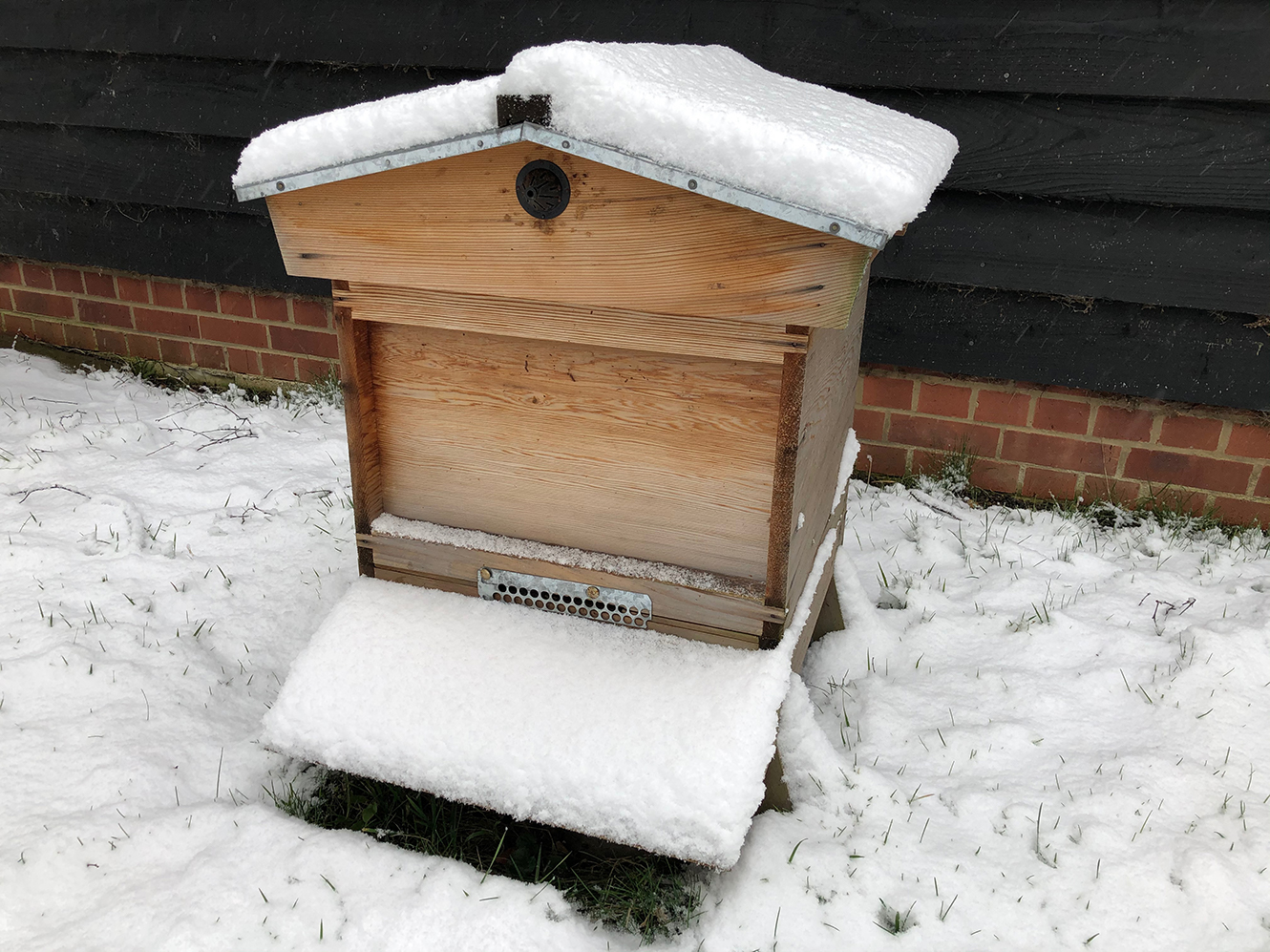Bee Blog - February 2021
This month's update from local beekeeper Gerald Bushby
Winter and the bees are in lockdown. Not because of any Coronavirus issues but because this is what they do every winter. No social distancing either, quite the opposite, they cluster together in a roughly spherical shape in the centre of the hive to keep warm and expend as little energy as possible. Their behaviour is similar to penguins taking turns inside and on the edge of the cluster. Bees on the exterior surface of the cluster become so cold that they can become motionless and appear dead. However what seems to happen is that these bees get pushed towards the centre of the cluster by warm bees who then replace them.
It is interesting to ponder on how they organise who goes where and when, it is not fully understood. The Queen, the most important member of the colony, who at this time of year has stopped laying eggs, is kept warm in the middle of the cluster. Bees are naturally cold blooded but in winter they shiver their flight muscles to generate the necessary warmth for the cluster throughout the winter months.
It might be thought that bees would naturally try to stay in the middle of the cluster to stay warm rather than move to the edge but this in not necessarily the case. Considerable research has taken place in respect of winter clusters of honey bees and some research has found that the heat generated by the bees in the core can be trapped so efficiently by the insulating outer shell of bees that the temperature in the core can raise to dangerous levels. In response, the hot bees trapped inside the insulating shell push their heads against the inward facing shell of bees, thereby transferring heat outwards and giving a signal to “loosen up” the cluster, increasing the surface area and opening up passageways through which warm air can escape by convection currents. It may well be that these bees are as keen to move to the outside of the cluster to cool down as those on the outside are keen to move towards the centre to warm up.
The cluster has other things to contend with as well. It must be able to move to its honey stores and yet conserve every calorie possible so as not to run out of food before the spring. It also needs a source of water so as to be able to dilute the honey for consumption. This can be obtained from outside if the temperature is high enough for flying or from condensation within the hive if outside flight is not possible. The cluster is a very complicated environment that bees have evolved over millions of years. In their natural state the system they have evolved works well.
Data for the 2020 honey crop in Europe is now in. It shows that generally 2020 was a bad year in Europe as a whole with an overall drop of 40% in honey harvests. Heavy rain and floods in Central and Eastern Europe have been blamed, Hungary and Austria saw the worst honey harvest in decades. Portugal and Italy saw drops of 80%.
The BBKA Honey Survey has show that the average yield per productive hive was also down this year in the United Kingdom generally by 30% on last year. Given that last year was the best ever for my hives I was somewhat surprised. Presumable the micro climate in my part of Oxfordshire must have been somewhat better than most other parts of the country.
Honey prices have also been rising this year and there have again been many reports in the United Kingdom from supermarkets of sampling revealing adulteration with cheeper syrups to bulk out the honey without the knowledge of retailers or consumers. At one stage Tesco temporarily removed its own brand clear honey from sale. Given the lower production rate in Europe this year these issues are likely to persist.
